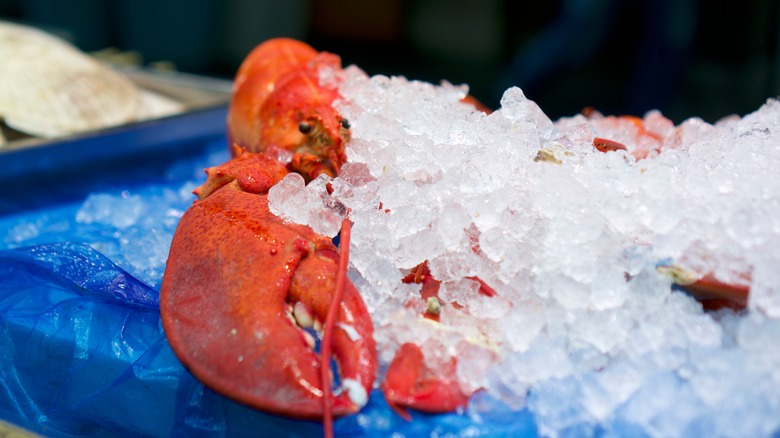How To Store Lobster Meat After You Cook It, And How Long It'll Stay Good For
Let's be honest, lobster meat costs a lot of money. If you've splurged on a full lobster dinner, or even just those lobster rolls from New England, it's understandable that you might be wary about not wasting leftovers. How do you preserve your precious shellfish? To help, we spoke to Armen Adamjan of Creative Explained, who partnered with Ziploc to educate people on reducing food waste and what he calls the grocery-to-meal journey. The goal is to completely seal the lobster meat and then freeze it. According to Adamjan, "You'll want to store cooked lobster meat in a resealable bag, pressing out as much air as possible before sealing to maximize freshness and shelf life."
You don't need to go get lobster-sized bags, and you shouldn't anyway. Adamjan recommends cutting up the lobster meat into smaller pieces and placing them into multiple small bags. "I portion it into meal-sized servings then label and date the bags and either freeze or keep them in my fridge. That way, when I'm ready to use it, I can heat exactly what I need." Once frozen, lobster meat should last you about three months at minimum if left in cold storage. When stored properly, it can usually go longer if you don't mind some texture changes. The USDA says frozen shellfish in general is best used within a year.
Freeze lobster in lots of sealed bags
There's a few more tips to keep in mind when freezing lobster. Adamjan points out that the lobster needs to completely cool before it goes into the freezer, because if it's too warm it might release steam inside the bag. That steam causes condensation, and condensation causes freezer burn. You can easily spot freezer burn on lobster if there are ice crystals or a pale coloring. Adamjan also has a pro-tip in case you're struggling with air bubbles in the sealed lobster bag: "Zip almost shut, insert a clean straw at the gap, gently draw out the air, then pinch the seal as you pull the straw out, this gives you an almost vacuum-like seal."
When you're ready to defrost, Adamjan warns that seafood is likely to change texture while sitting in the freezer. However, if you defrost the lobster correctly, you're less likely to run into problems. If you've got time, let the frozen lobster sit in the fridge overnight to thaw it. Don't leave it on the counter where it'll be sitting at unsafe temperatures, since that's how you get bacteria. If you really need to defrost fast, you can submerge the sealed bags in cold water for a couple of hours, but good lobster should be prepped with care. It's expensive.

